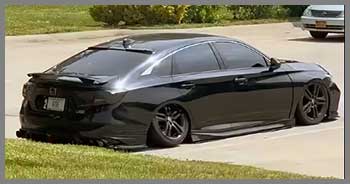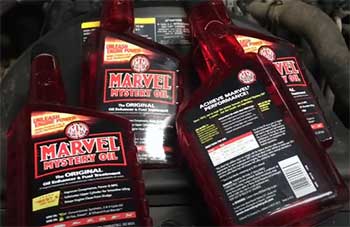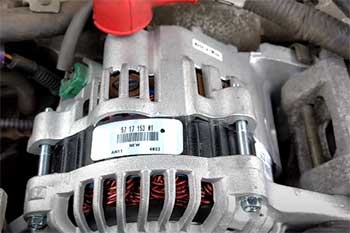I’ve always been a car enthusiast, spending countless hours researching and test-driving vehicles to find the perfect blend of style, performance, and value. When it came time to choose between the 2022 Acura ILX and the 2022 Honda Accord, I found myself torn.
Both are standout sedans from Honda’s family, but they cater to different tastes. In this article, I’ll walk you through my experience comparing these two, breaking down their features, pros, cons, and more to help you decide which one fits your lifestyle. Let’s get started.
Comparison Table: Acura ILX vs. Honda Accord (2022 Models)
| Feature | Acura ILX | Honda Accord |
| Starting MSRP | $27,300 | $26,520 |
| Engine | 2.4L 4-cylinder, 201 hp | 1.5L Turbo 4-cylinder, 192 hp |
| Transmission | 8-speed dual-clutch | CVT (Continuously Variable) |
| Fuel Economy (City/Hwy) | 24/34 MPG | 30/38 MPG |
| Cargo Space | 13.5 cu. ft. | 16.7 cu. ft. |
| Warranty (Basic) | 4 years/50,000 miles | 3 years/36,000 miles |
| Standard Features | Leatherette seats, heated front seats, moonroof | Cloth seats, 7-inch touchscreen |
| NHTSA Safety Rating | 5 stars | 5 stars |
| Interior Legroom (Front) | 42.3 inches | 42.3 inches |
| Passenger Volume | 89.3 cu. ft. | 105.6 cu. ft. |
My First Impressions of the Acura ILX

Stepping into the 2022 Acura ILX felt like slipping into a tailored suit.
The cabin exudes a premium vibe, with leatherette-trimmed seats and a sleek, driver-focused layout.
The ILX is Acura’s entry-level sedan, but it doesn’t skimp on luxury.
Its 2.4-liter 4-cylinder engine pumps out 201 horsepower, paired with an 8-speed dual-clutch transmission that delivers crisp, engaging shifts.
I took it for a spin around the city, and the steering was responsive, with a sporty edge that made weaving through traffic a breeze.
The ILX’s exterior design is sharp, with a bold diamond-pentagon grille and Jewel Eye LED headlights that give it a distinctive, upscale look.It’s compact—182 inches long and 71 inches wide—making it a dream to park in tight urban spaces. But I noticed the back seat felt snug, and the 13.5 cubic feet of trunk space, while decent, couldn’t match the roominess I’d later find in the Accord.
Discovering The Honda Accord’s Strengths
The 2022 Honda Accord, on the other hand, felt like the reliable friend who’s always ready for anything. Its 1.5-liter turbocharged 4-cylinder engine produces 192 horsepower, slightly less than the ILX, but the continuously variable transmission (CVT) keeps things smooth and efficient.
Driving the Accord on the highway was a revelation—its ride was composed, and the cabin was impressively quiet, even at 70 mph. The Accord’s 195.7-inch length and 73.3-inch width make it a midsize sedan, offering more interior space than the compact ILX.
The Accord’s design is sleek but understated, with clean lines and a less aggressive stance than the ILX. Inside, the cloth seats in the base LX trim felt functional but not luxurious. However, the 7-inch touchscreen and standard Honda Sensing safety suite (including adaptive cruise control and lane-keeping assist) impressed me right away. The Accord’s 16.7 cubic feet of trunk space and expansive rear legroom made it clear this car was built for practicality.
Also Read: My Thoughts on Honda Ridgeline RTL-E Vs. Black Edition.
Performance: Power Vs. Efficiency
When I pushed the ILX through some winding roads, its 201 horsepower and dual-clutch transmission gave it a lively, sporty feel. The paddle shifters, standard on all trims, let me take control, making every gear change precise and fun.
The ILX’s suspension is tuned for agility, and it hugged corners with confidence. However, its 24/34 MPG (city/highway) fuel economy, while respectable, requires premium unleaded gas, which added a few bucks to each fill-up.The Accord, by contrast, leaned toward efficiency.
Its 1.5-liter turbo engine and CVT delivered a smooth, effortless drive, with an impressive 30/38 MPG. On a road trip, I noticed fewer stops at the pump, and the Accord’s use of regular unleaded gas was a wallet-friendly bonus. The Sport trim, with a 2.0-liter turbo engine producing 252 horsepower, is available for those craving more power, but it sacrifices some fuel economy (22/32 MPG). For me, the base engine struck a great balance for daily commuting.
Interior Comfort And Technology

Inside the ILX, I felt pampered. The standard heated front seats were a godsend on chilly mornings, and the power moonroof added an airy feel to the cabin.
The On Demand Multi-Use Display, a touchscreen controlling entertainment and climate, was intuitive, though a bit dated compared to newer systems.
Higher trims, like the Premium and Technology packages, offer a 10-speaker ELS audio system that made my playlists sound incredible.
But the back seat’s 35.9 inches of legroom felt cramped for taller passengers, and the 89.3 cubic feet of passenger volume was noticeably tighter than the Accord’s.
The Accord’s interior, while less luxurious, prioritized space and functionality.
With 105.6 cubic feet of passenger volume and 40.4 inches of rear legroom, it felt like a living room on wheels. The base LX trim’s 7-inch touchscreen was smaller than the ILX’s, but the interface was user-friendly, and Apple CarPlay/Android Auto integration was standard on most trims. The Accord lacks standard heated seats or a moonroof in lower trims, which was a letdown after experiencing the ILX’s creature comforts. Still, the Accord’s larger cargo space made it a champ for hauling groceries or luggage.
Safety: A Shared Strength
Both cars shine in safety, earning 5-star ratings from the National Highway Traffic Safety Administration (NHTSA). The ILX’s AcuraWatch suite includes adaptive cruise control, collision mitigation braking, and lane-keeping assist, all standard. I felt confident on busy highways, knowing the ILX was watching my back. The car’s Advanced Compatibility Engineering (ACE) body structure adds extra protection in a crash.
The Accord’s Honda Sensing suite mirrors the ILX’s safety tech, with the same core features plus standard knee airbags for the driver and front passenger, a slight edge over the ILX. The Accord also has a back-seat reminder system, which the ILX lacks, a handy feature for parents. In my test drives, both cars felt equally secure, but the Accord’s additional airbags and reminders gave it a slight advantage for family-focused buyers.
Pros Of The Acura ILX
- Sporty Performance: The 201-hp engine and 8-speed dual-clutch transmission deliver a lively, engaging drive.
- Luxury Features: Standard heated seats, leatherette upholstery, and a moonroof elevate the cabin’s premium feel.
- Longer Warranty: A 4-year/50,000-mile basic warranty and 6-year/70,000-mile powertrain warranty outlast the Accord’s.
- Compact Size: At 182 inches long, it’s easier to maneuver and park in tight spaces.
- High-End Audio: Available 10-speaker ELS system offers superb sound quality.
Cons Of The Acura ILX
- Tight Rear Seating: Only 35.9 inches of rear legroom makes it less ideal for taller passengers.
- Smaller Trunk: 13.5 cubic feet of cargo space lags behind the Accord’s.
- Premium Fuel Requirement: Using premium unleaded gas increases fuel costs.
- Dated Infotainment: The On Demand Multi-Use Display feels less modern than competitors’ systems.
- Limited Engine Options: Only one engine choice, unlike the Accord’s range of powertrains.
Pros Of The Honda Accord
- Spacious Interior: 105.6 cubic feet of passenger volume and 40.4 inches of rear legroom make it family-friendly.
- Excellent Fuel Economy: 30/38 MPG with the base engine saves money at the pump.
- Larger Trunk: 16.7 cubic feet of cargo space handles everything from groceries to weekend gear.
- Regular Unleaded Fuel: No need for premium gas, keeping costs down.
- Multiple Engine Options: Offers a 1.5L turbo, 2.0L turbo, and hybrid for varied needs.
Cons Of The Honda Accord

- Less Luxurious Interior: Cloth seats in lower trims lack the ILX’s premium vibe.
- Shorter Warranty: 3-year/36,000-mile basic and 5-year/60,000-mile powertrain warranties are less generous.
- Larger Size: At 195.7 inches, it’s harder to park in tight spaces.
- No Standard Paddle Shifters: Only available on higher trims, unlike the ILX’s standard offering.
- Base Model Lacks Features: No standard heated seats or moonroof in the LX trim.
Read More: My Thoughts on Honda Passport Vs. Acura RDX.
Cost And Value: Breaking Down The Numbers
Price was a big factor in my decision. The 2022 ILX starts at $27,300, slightly more than the Accord’s $26,520. However, the ILX’s standard luxury features—like heated seats and a moonroof—make it feel like a bargain for a premium brand. A used 2022 ILX ranges from $21,955 to $29,997, while a used 2022 Accord goes for $23,725 to $31,997, giving the ILX a slight edge in the used market for lower-end pricing.
The Accord’s value shines in its fuel efficiency and lower maintenance costs. Its 33 MPG average (combined) beats the ILX’s 28 MPG, and regular unleaded gas keeps ownership costs down. Honda also covers scheduled maintenance for 2 years/24,000 miles, something Acura doesn’t offer. However, the ILX’s longer warranty (4 years/50,000 miles vs. 3 years/36,000 miles) and better initial quality rating from J.D. Power (second among small premium cars) gave me confidence in its long-term dependability.
Driving Dynamics: Fun Vs. Practicality
The ILX’s sporty edge won me over on twisty roads. Its lighter weight (3,137 lbs) and responsive handling made it feel nimble, almost like a grown-up Honda Civic. The dual-clutch transmission’s quick shifts added a layer of excitement, especially with paddle shifters at my fingertips. But on long highway stretches, the ILX’s firmer suspension and smaller size made it less comfortable than the Accord.
The Accord, with its softer ride and larger footprint, was my go-to for road trips. Its 3,131-lb curb weight (similar to the ILX) didn’t hinder its smooth handling, and the CVT ensured effortless cruising. However, it lacked the ILX’s playful character, feeling more like a practical daily driver than a thrill machine.
If you love spirited drives, the ILX is your match; if comfort and efficiency are key, the Accord takes the crown.
Maintenance Tips For Acura ILX
- Regular Oil Changes: Use synthetic oil every 7,500 miles to maintain the 2.4L engine’s performance.
- Tire Rotations: Rotate tires every 6,000 miles to ensure even wear, especially given the ILX’s sporty handling.
- Brake Inspections: Check brakes annually, as the ILX’s responsive handling can stress pads during aggressive driving.
- Transmission Fluid: Replace fluid every 40,000 miles to keep the dual-clutch transmission smooth.
- Premium Fuel: Always use premium unleaded to avoid engine knocking and maintain efficiency.
Maintenance Tips For Honda Accord
- Oil Changes: Stick to 5,000–7,500-mile intervals with regular oil to keep the turbo engine healthy.
- Air Filter Replacement: Replace every 15,000 miles to optimize fuel economy and performance.
- CVT Fluid: Change transmission fluid every 30,000 miles to ensure smooth shifts.
- Tire Maintenance: Rotate tires every 6,000 miles and check pressure monthly for optimal MPG.
- Coolant Flush: Flush the cooling system every 60,000 miles to prevent overheating.
Comparison With Other Brands
- Acura ILX vs. Lexus IS: Luxury Appeal: The ILX offers premium features at a lower price ($27,300 vs. $40,125), but the Lexus IS has a more refined interior and stronger resale value.
- Acura ILX vs. Audi A3: Performance Edge: The ILX’s 201 hp outpaces the A3’s base 184 hp, but the A3’s quattro all-wheel drive offers better traction in adverse conditions.
- Honda Accord vs. Toyota Camry: Reliability and Space: The Accord’s larger interior and 33 MPG average edge out the Camry’s 32 MPG, but the Camry offers a more powerful V6 option.
- Honda Accord vs. Hyundai Sonata: Value Proposition: The Accord’s resale value (31.5% depreciation) beats the Sonata’s (35.2%), but the Sonata includes a longer 5-year/60,000-mile warranty.
Frequently Asked Questions (Faq)
It depends on your priorities. The ILX offers a sportier drive and more luxury features, while the Accord provides better fuel economy and more interior space.
The ILX is closely related to the Honda Civic in terms of platform and size, but it’s positioned as a premium alternative with features akin to the Accord.
Yes, the ILX ranks high in reliability, with J.D. Power rating it second among small premium cars for initial quality.
The ILX is comparable to luxury compact sedans like the Audi A3, Lexus IS, and Mercedes-Benz A-Class, offering similar features at a lower price point.
Conclusion
After weeks of test drives and number-crunching, I leaned toward the Acura ILX for its sporty flair and upscale cabin. Its compact size and premium features made it feel like a luxury car without the hefty price tag. However, the Honda Accord’s spacious interior, stellar fuel economy, and lower ownership costs were hard to ignore, especially for family-oriented buyers or long-distance commuters.
If you’re like me—a driver who craves a fun, luxurious ride with a touch of exclusivity—the ILX is your pick. Its nimble handling and upscale interior make every drive feel special. But if you need space, efficiency, and versatility for daily life, the Accord delivers without breaking the bank. Both cars are reliable, safe, and well-equipped, so your choice depends on whether you prioritize luxury or practicality.

